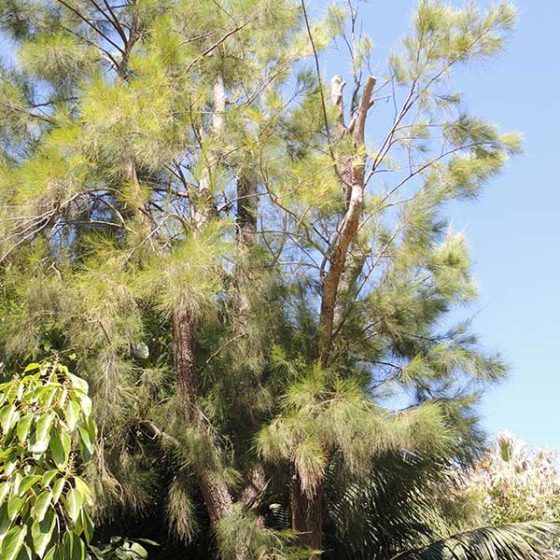Australian Pine Tree
Casuarina equisetifolia
Casuarina is a semi-perennial tree of tropical coasts, very useful as a wind breaking element. It is endemic in Australia, Malaysia and Polynesia.
In the Hawaiian Islands, where it was introduced, it grows on sandy, calcareous and salty coasts as well as in the heavy rain and volcanic soils of the mountains. It settles easily in the soil and it has allopathic properties which produces compounds that inhibit the growth of native vegetation. The Australian Pine loses branches easily and therefore has dense litter accumulation.
It is very useful for rural and urban reforestation in tropics, subtropics and temperate regions; it is nitrogen-fixing and harbours a symbiosis with the Frankia bacteria, besides being a fast-growing tree.
Its shaft reaches 30 metres. It has a bark that is divided into longitudinal bars with a high amount of tannin. It looks like a conifer because of the foliage, but it is not.
Apparently C. equisetifolia presents acicular leaves (in the form of needles) just like the pines, but these are nothing more than photosynthetic branches, their true leaves are tiny and do not possess chloroplasts. This is another evolutionary convergence with a group even further than the gymnosperm leaves, the puzzlegrass (Equisetum), hence the specific epithet is equisetifolia, equiseto leaves.
Its wood is used for plaques, fences and it makes for excellent firewood.


